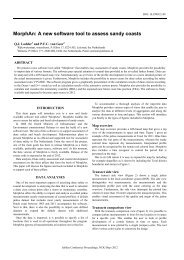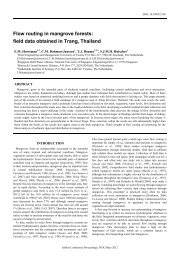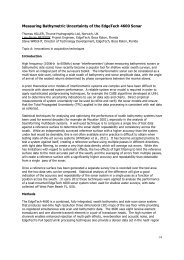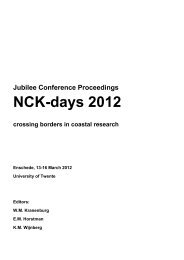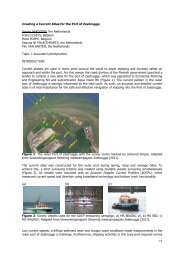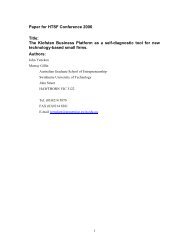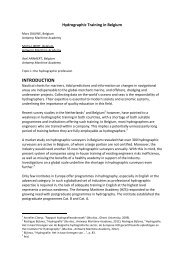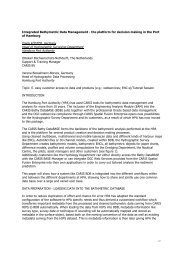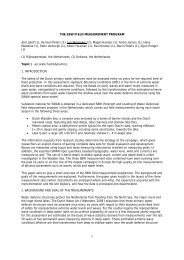Determining rock quantities using swathe ... - UT Proceedings
Determining rock quantities using swathe ... - UT Proceedings
Determining rock quantities using swathe ... - UT Proceedings
Create successful ePaper yourself
Turn your PDF publications into a flip-book with our unique Google optimized e-Paper software.
Qualitative results<br />
Besides the quantitative results from the table, the following qualitative results were also found and<br />
need to be taken into account when surveying stones:<br />
- When <strong>using</strong> a crane monitoring system, special attention should be given to bucket size and<br />
shape as well as to a well-defined measurement protocol resulting in the bucket / grab always<br />
being placed in the same orientation (longest dimension transverse to average slope<br />
direction) and in the same condition (opened / closed)<br />
- Surveys on the stones done <strong>using</strong> either multibeam or laser systems require a certain degree<br />
of (manual) editing and filtering as a high number of spikes may exist in the data when<br />
compared to surveys on sand / filter layers<br />
- The precision of some multibeam systems degrades in very shallow water (< 2 meter below<br />
the transducer); it is suggested that this is a result of the beam forming processes which<br />
requires a minimum water depth to take place fully. The effect becomes more pronounced<br />
with a greater stone diameter<br />
- Surveys with the crane monitoring system produced each time the largest mean layer<br />
thickness as well as the largest values for the precision. The mean bed level surveyed by this<br />
system lies above both references when <strong>using</strong> a bucket as crane tool. Results vary with the<br />
size and type of bucket / grab used.<br />
- Surveys with the multibeam and laser systems, on average, produced the lowest layer<br />
thicknesses.<br />
Multibeam reults in more detail<br />
The results of both the dock and test pit trials for the multibeam system in a 1x1 meter cell size are<br />
displayed in Figure 3 and show a good comparison between both trials. The graphs for the dock trials<br />
and test pit trials show a deviation from the trend line established at around a Dn50 of 0.25 meter.<br />
0.2<br />
confidence level 2.5% (m) = -0.03Dn50 + 0.114<br />
0.0<br />
Hemisphere - multibeam (1x1 m grid, m)<br />
-0.2<br />
-0.4<br />
-0.6<br />
-0.8<br />
Dock trials<br />
average systematic error<br />
2σ + = 0.27Dn50 + 0.114<br />
2σ - = -0.33Dn50 - 0.164<br />
test pit trials<br />
average systematic error (m) = -0.30Dn50<br />
confidence level 97.5% (m) = -0.63 Dn50 - 0.164<br />
-1.0<br />
0.0 0.2 0.4 0.6 0.8 1.0 1.2 1.4<br />
Dn50 (m)<br />
Figure 3: Results of systematic error and precision resulting from both dock and test pit trials in a<br />
1x1 m grid.<br />
4/6




